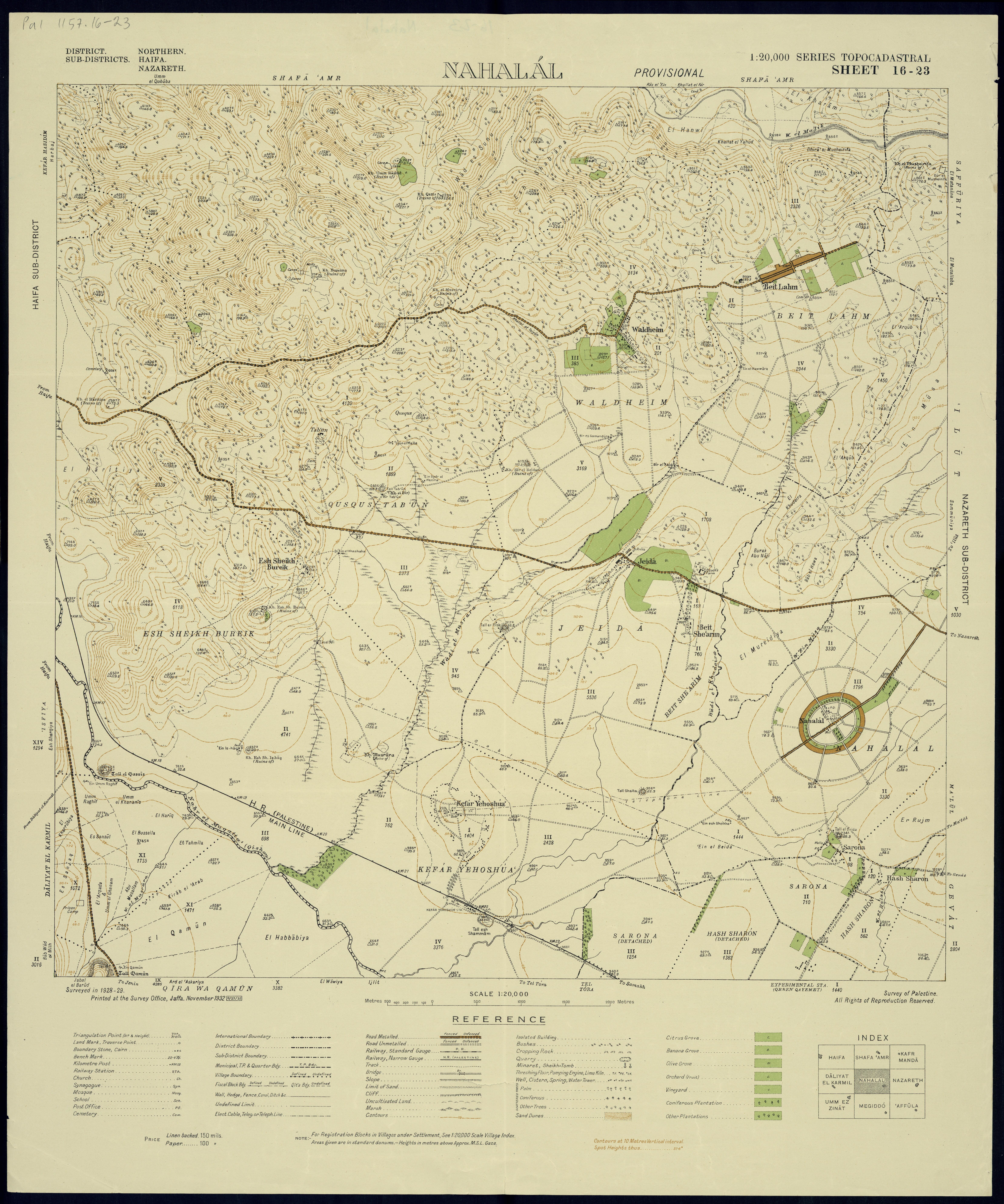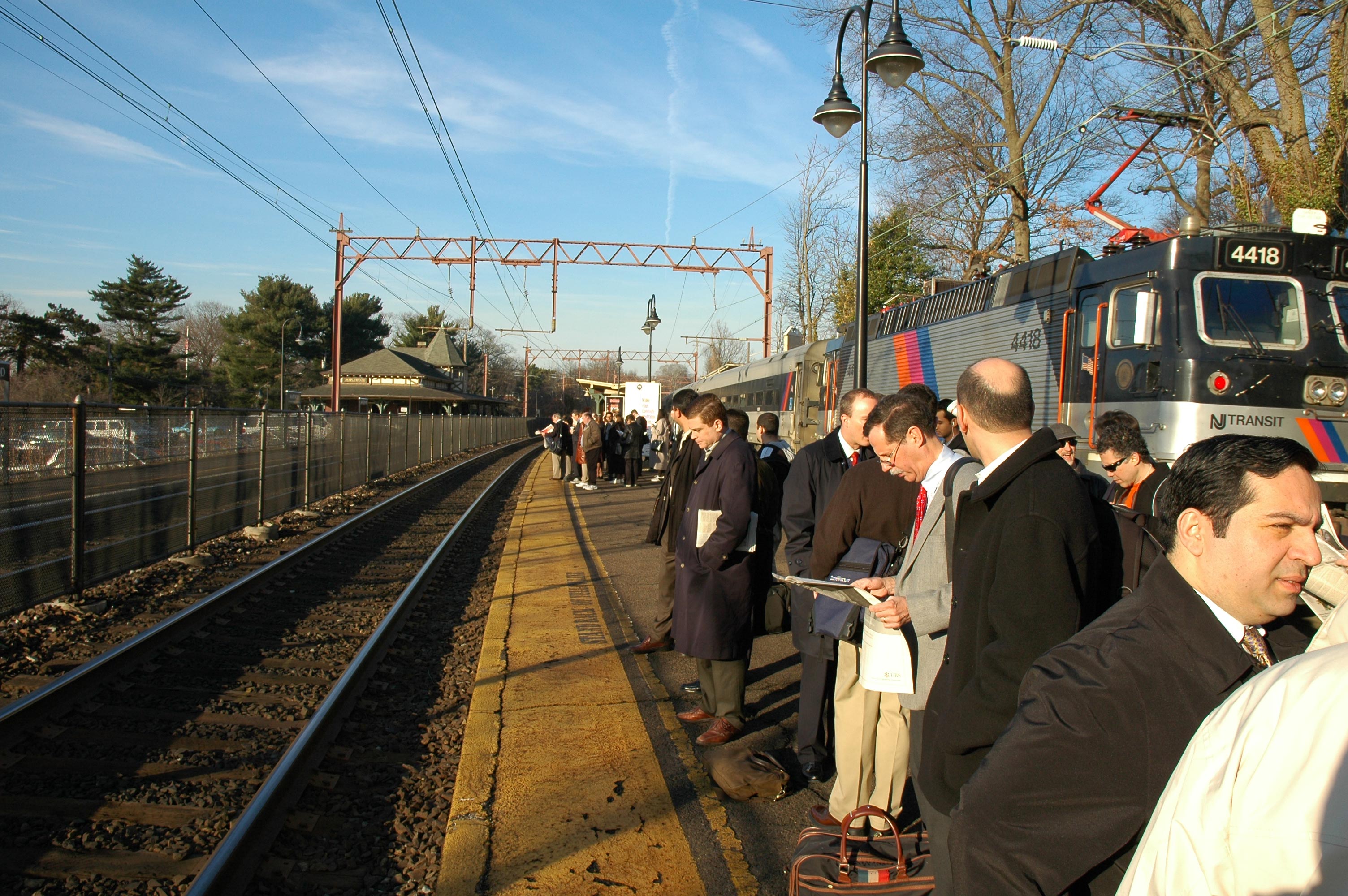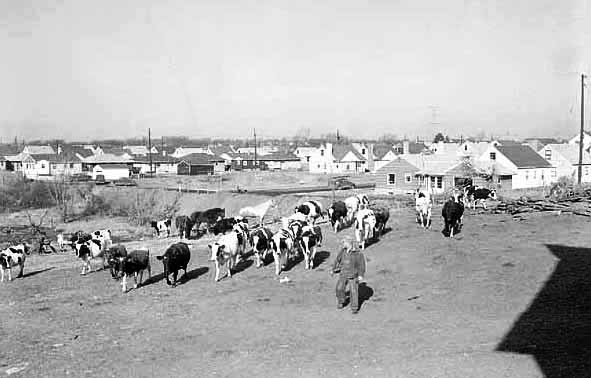|
Moshavim
A moshav (, plural ', "settlement, village") is a type of Israeli village or town or Jewish settlement, in particular a type of cooperative agricultural community of individual farms settler, pioneered by the Labour Zionists between 1904 and 1914, during what is known as the Second Aliyah, second wave of ''aliyah''. A resident or a member of a moshav can be called a "moshavnik" (). There is an umbrella organization, the Moshavim Movement. The moshavim are similar to kibbutzim with an emphasis on communitarian, individualist labour. They were designed as part of the Zionist state-building programme following the green revolution in the Mandatory Palestine, British Mandate of Palestine during the early 20th century, but in contrast to the collective farming kibbutzim, farms in a moshav tended to be individually owned but of fixed and equal size. Workers produced crops and other goods on their properties through individual or pooled labour with the profit and foodstuffs go ... [...More Info...] [...Related Items...] OR: [Wikipedia] [Google] [Baidu] |
Moshavim Movement
The Moshavim Movement (, ''Tnu'at HaMoshavim'') is one of the main Settlement movement (Israel), settlement movements in Israel, whose members are cooperative villages organized as moshavim and moshav shitufi, moshavim shitufiim. History Founded in 1920 with the establishment of the first moshav, Nahalal, in the Jezreel Valley in the north of Israel, the movement today has a membership of 253 moshavim from the total of 440 moshavim and moshavim shitufiim in Israel. The member moshavim have access to a range of mutual help instruments maintained by the Moshavim Movement. These include a mutual insurance company, a mutual help fund, a mortgage bank for moshavim, and a pension and retirement fund for individual moshav members. In the past, the Moshavim Movement created a system of regional service cooperatives (''mif'alim ezoriim'' in Hebrew) for supply of farm inputs and for marketing and processing of farm products for its members. These regional cooperatives were essentially simila ... [...More Info...] [...Related Items...] OR: [Wikipedia] [Google] [Baidu] |
Nahalal
Nahalal () is a moshav in Northern District (Israel), northern Israel. Covering , it falls under the jurisdiction of the Jezreel Valley Regional Council. In it had a population of . Nahalal is best known for its general layout, as designed by Richard Kauffmann: slightly oval round, similar to a spoke wheel, with its public buildings at the "hub" and individual plots of agricultural land radiating from it like spokes with symmetrically placed roads creating eight equal Circular sector, sectors, an inner ring of residential buildings, and an outer ring road.Richard Kauffmann''Die Bebauungsplaene der Kleinsiedlungen Kfar-Nahalal und Kfar-Jecheskiel''('The construction plans for the agricultural small housing estates Kfar Nahalal and Kfar Yehezkel, Kfar Jecheskiel'), published by the Department for Agricultural Colonization of the Zionist Executive, Jerusalem (1923), in German. In the Hebrew Bible Nahalal was a Levitical city mentioned in the Hebrew Bible. According to the Book of ... [...More Info...] [...Related Items...] OR: [Wikipedia] [Google] [Baidu] |
Moshav Shitufi
A moshav shitufi (, lit. ''collective moshav'', pl. ''moshavim shitufiim'') is a type of cooperative State of Israel, Israeli village, whose organizational principles place it between the kibbutz and the moshav on the scale of cooperation. Ideology A classic moshav (formally known as ''moshav ovdim'', or ''workers' moshav'') is a village-level service cooperative that takes care of farm services (such as marketing, supply, and credit) for its members, while all production and consumption activities are handled at the level of families and households. A classical kibbutz is a village-level production cooperative, with all production, consumption, and service decisions handled collectively. Moshav shitufi is an intermediate form, in which production and services are handled collectively, while consumption decisions remain the responsibility of the households. Moshav shitufi members are engaged in agriculture and industry in the village and also work in various professions outside the ... [...More Info...] [...Related Items...] OR: [Wikipedia] [Google] [Baidu] |
Israeli Town Of Bayt Zakariah, June 2015
Israeli may refer to: * Something of, from, or related to the State of Israel * Israelis, citizens or permanent residents of the State of Israel * Modern Hebrew, a language * ''Israeli'' (newspaper), published from 2006 to 2008 * Guni Israeli (born 1984), Israeli basketball player See also * Israel (other) * Israelites (other), the ancient people of the Land of Israel * List of Israelis Israelis ( ''Yiśraʾelim'') are the citizens or permanent residents of the State of Israel. The largest ethnic groups in Israel are Israeli Jews, Jews (75%), followed by Arab-Israelis, Palestinians and Arabs (20%) and other minorities (5%). _ ... {{disambiguation Language and nationality disambiguation pages ... [...More Info...] [...Related Items...] OR: [Wikipedia] [Google] [Baidu] |
Commuter Town
A commuter town is a populated area that is primarily residential rather than commercial or industrial. Routine travel from home to work and back is called commuting, which is where the term comes from. A commuter town may be called by many other terms: "bedroom community" (Canada and northeastern US), "bedroom town", "bedroom suburb" (US), "dormitory town" (UK). The term " exurb" was used from the 1950s, but since 2006, is generally used for areas beyond suburbs and specifically less densely built than the suburbs to which the exurbs' residents commute. Causes Often commuter towns form when workers in a region cannot afford to live where they work and must seek residency in another town with a lower cost of living. The late 20th century, the dot-com bubble and United States housing bubble drove housing costs in Californian metropolitan areas to historic highs, spawning exurban growth in adjacent counties. Workers with jobs in San Francisco found themselves moving further ... [...More Info...] [...Related Items...] OR: [Wikipedia] [Google] [Baidu] |
Suburb
A suburb (more broadly suburban area) is an area within a metropolitan area. They are oftentimes where most of a metropolitan areas jobs are located with some being predominantly residential. They can either be denser or less densely populated than the city and can have a higher or lower rate of detached single family homes than the city as well. Suburbs can have their own political or legal jurisdictions, especially in the United States, but this is not always the case, especially in the United Kingdom, where most suburbs are located within the administrative boundaries of cities. In most English-speaking world, English-speaking countries, suburban areas are defined in contrast to core city, central city or inner city areas, but in Australian English and South African English, ''suburb'' has become largely synonymous with what is called a "neighborhood" in the U.S. Due in part to historical trends such as white flight, some suburbs in the United States have a higher population ... [...More Info...] [...Related Items...] OR: [Wikipedia] [Google] [Baidu] |
Palestinians
Palestinians () are an Arab ethnonational group native to the Levantine region of Palestine. *: "Palestine was part of the first wave of conquest following Muhammad's death in 632 CE; Jerusalem fell to the Caliph Umar in 638. The indigenous population, descended from Jews, other Semitic groups, and non-Semitic groups such as the Philistines, had been mostly Christianized. Over succeeding centuries it was Islamicized, and Arabic replaced Aramaic (a Semitic tongue closely related to Hebrew) as the dominant language" * : "Palestinians are the descendants of all the indigenous peoples who lived in Palestine over the centuries; since the seventh century, they have been predominantly Muslim in religion and almost completely Arab in language and culture." * : "Furthermore, Zionism itself was also defined by its opposition to the indigenous Palestinian inhabitants of the region. Both the 'conquest of land' and the 'conquest of labor' slogans that became central to the dominant stra ... [...More Info...] [...Related Items...] OR: [Wikipedia] [Google] [Baidu] |
Six-Day War
The Six-Day War, also known as the June War, 1967 Arab–Israeli War or Third Arab–Israeli War, was fought between Israel and a coalition of Arab world, Arab states, primarily United Arab Republic, Egypt, Syria, and Jordan from 5 to 10June 1967. Military hostilities broke out amid poor relations between Israel and its Arab neighbors, which had been observing the 1949 Armistice Agreements signed at the end of the 1948 Arab–Israeli War, First Arab–Israeli War. In 1956, regional tensions over the Straits of Tiran (giving access to Eilat, a port on the southeast tip of Israel) escalated in what became known as the Suez Crisis, when Israel invaded Egypt over the Israeli passage through the Suez Canal and Straits of Tiran, Egyptian closure of maritime passageways to Israeli shipping, ultimately resulting in the re-opening of the Straits of Tiran to Israel as well as the deployment of the United Nations Emergency Force (UNEF) along the Borders of Israel#Border with Egypt, Egypt ... [...More Info...] [...Related Items...] OR: [Wikipedia] [Google] [Baidu] |
Development Town
Development towns (, ''Ayarat Pitu'ah'') were new settlements built in Israel during the 1950s in order to provide permanent housing for a large influx of Jewish immigrants from Arab countries, Holocaust survivors from Europe and other new immigrants, who arrived to the newly established State of Israel. The towns were designed to expand the population of the country's peripheral areas while easing pressure on the crowded centre. Most of them were built in the Galilee in the north of Israel, and in the northern Negev desert in the south. In addition to the new towns, Jerusalem was also given development town status in the 1960s. In the context of the Arab–Israeli conflict, Jewish refugees from Arab states were initially resettled in refugee camps, known variously as immigrant camps, '' ma'abarot'' and development towns. Development towns were subsequently considered by some to be places of relegation and marginalisation. Background In the aftermath of the establishment o ... [...More Info...] [...Related Items...] OR: [Wikipedia] [Google] [Baidu] |
Middle Class
The middle class refers to a class of people in the middle of a social hierarchy, often defined by occupation, income, education, or social status. The term has historically been associated with modernity, capitalism and political debate. Common definitions for the middle class range from the middle fifth of individuals on a nation's income ladder, to everyone but the poorest and wealthiest 20%. Theories like "Paradox of Interest" use decile groups and wealth distribution data to determine the size and wealth share of the middle class. Terminology differs in the United States, where the term ''middle class'' describes people who in other countries would be described as working class. There has been significant global middle-class growth over time. In February 2009, ''The Economist'' asserted that over half of the world's population belonged to the middle class, as a result of rapid growth in emerging countries. It characterized the middle class as having a reasonable amo ... [...More Info...] [...Related Items...] OR: [Wikipedia] [Google] [Baidu] |
Mizrahi Jews
Mizrahi Jews (), also known as ''Mizrahim'' () in plural and ''Mizrahi'' () in singular, and alternatively referred to as Oriental Jews or ''Edot HaMizrach'' (, ), are terms used in Israeli discourse to refer to a grouping of Jews, Jewish communities that lived in the Muslim world. ''Mizrahi'' is a political sociological term that was coined with the creation of the Israel, State of Israel. It translates as "Easterner" in Hebrew. The term ''Mizrahi'' is almost exclusively applied to descendants of Jewish communities from North Africa, Central Asia, West Asia, and parts of the North Caucasus. This includes Iraqi Jews, Iranian Jews, Bukharan Jews, Bukharian Jews, Kurdish Jews, Afghan Jews, Mountain Jews, Georgian Jews, and the small community of History of the Jews in Bahrain, Bahraini Jews. The aforementioned groups are believed to derive their ancestry in large part from the Babylonian captivity. Yemenite Jews are also ''Mizrahi'' Jews, though they differ from other ''Mizra ... [...More Info...] [...Related Items...] OR: [Wikipedia] [Google] [Baidu] |
Jezreel Valley
The Jezreel Valley (from the ), or Marj Ibn Amir (), also known as the Valley of Megiddo, is a large fertile plain and inland valley in the Northern District (Israel), Northern District of Israel. It is bordered to the north by the highlands of the Lower Galilee region, to the south by the Samarian highlands, to the west and northwest by the Mount Carmel range, and to the east by the Jordan Valley (Middle East), Jordan Valley, with Mount Gilboa marking its southern extent. The largest settlement in the valley is the city of Afula, which lies near its center. Name The Jezreel Valley takes its name from the ancient city of Jezreel (city), Jezreel (known in Hebrew as Yizre'el; ; known in Arabic as Zir'in, Zir'ēn, ) which was located on a low hill overlooking the southern edge of the valley. The word ''Jezreel'' comes from the Hebrew, and means "God sows" or "El (god), El sows".Cheyne and Black, ''Encyclopedia Biblica'' The Arabic name of the valley is Marj Bani Amir (), which ... [...More Info...] [...Related Items...] OR: [Wikipedia] [Google] [Baidu] |





